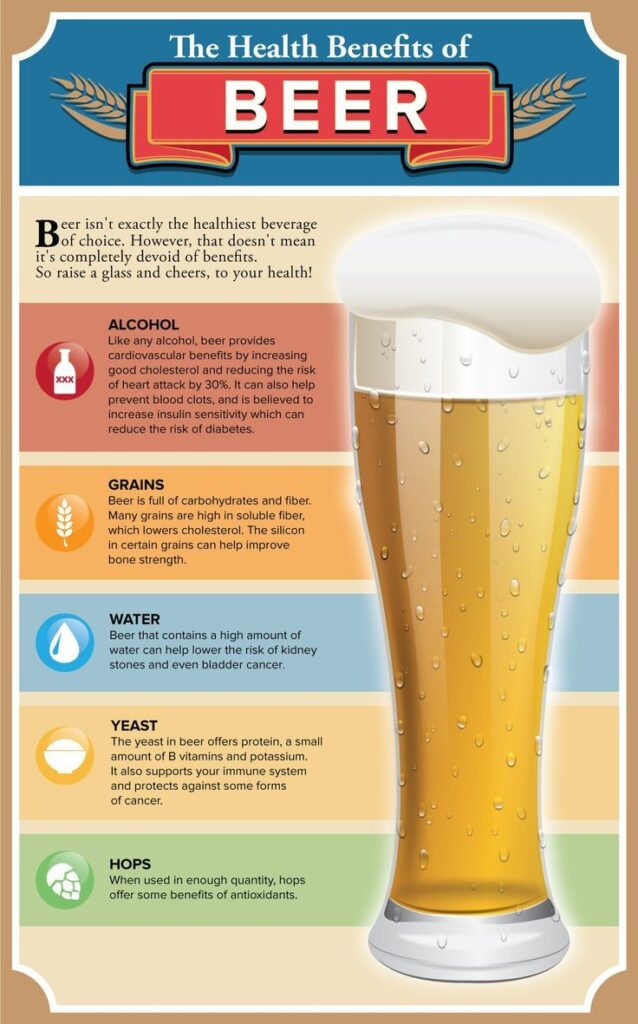Unlock the science behind the buzz! Dive into the surprising factors that determine how drunk you get on beer.
Table of Contents
Have you ever found yourself wondering how many beers it takes to get drunk? It’s a common question, but the answer is not as straightforward as one might think. Alcohol intoxication is influenced by a combination of factors, including individual metabolism, tolerance levels, and external circumstances. In this blog post, we will delve deep into the science behind alcohol intoxication to provide a comprehensive understanding of what happens when we consume beer.
Understanding Alcohol Metabolism
Alcohol metabolism plays a crucial role in determining how quickly and intensely we feel the effects of alcohol. When we consume beer, the alcohol enters our bloodstream and is broken down by enzymes such as alcohol dehydrogenase. This process converts alcohol into acetaldehyde, a toxic substance that contributes to the overall intoxication experience.
Factors such as body weight, gender, and genetics can have a significant impact on alcohol metabolism. Generally, individuals with higher body weight tend to metabolize alcohol more efficiently than those with lower body weight. Gender also plays a role, as women typically have lower levels of alcohol dehydrogenase compared to men, leading to slower alcohol breakdown and higher intoxication levels.
Individual Tolerance Levels
Tolerance refers to the body’s ability to adapt to the effects of alcohol over time. Regular alcohol consumption can increase tolerance levels, requiring higher quantities of alcohol to achieve the same level of intoxication. This phenomenon can be dangerous, as individuals with high tolerance levels may inadvertently consume excessive amounts of alcohol without feeling the immediate effects.
It is essential to understand one’s own tolerance levels and monitor alcohol consumption accordingly. Keeping track of how alcohol affects you personally can help prevent overconsumption and potential harm. Knowing when to stop and practicing moderation are key components of responsible drinking habits.
Factors Influencing Intoxication
Several external factors can influence intoxication levels when consuming beer. Factors such as food consumption, hydration levels, and stress can impact how alcohol is absorbed and metabolized in the body.

Image courtesy of thebeerthrillers.com via Google Images
Eating a substantial meal before drinking can slow down the absorption of alcohol and reduce the intensity of intoxication. Staying hydrated can also help mitigate the effects of alcohol, as dehydration can exacerbate intoxication symptoms. High-stress levels can amplify the effects of alcohol, making individuals more susceptible to rapid intoxication.
Practicing responsible drinking habits, such as pacing yourself and knowing your limits, is crucial to maintaining a safe and enjoyable drinking experience. Understanding the factors that influence intoxication can help individuals make informed decisions when consuming alcohol and prevent negative consequences associated with overindulgence.
Conclusion
In conclusion, the question of how many beers it takes to get drunk is not a simple one-size-fits-all answer. Alcohol intoxication is a complex process influenced by individual differences in metabolism, tolerance levels, and external factors. By understanding the science behind alcohol intoxication and practicing responsible drinking habits, individuals can enjoy alcohol in a safe and enjoyable manner.
Explore some common questions related to getting drunk on beer and find the answers below:
How does body weight affect alcohol metabolism?
Body weight plays a role in alcohol metabolism, as individuals with higher body weight tend to metabolize alcohol more efficiently than those with lower body weight. This can result in feeling less intoxicated after consuming the same amount of alcohol.
How does gender influence alcohol tolerance levels?
Gender impacts alcohol tolerance levels due to differences in alcohol dehydrogenase levels. Women typically have lower levels of this enzyme compared to men, leading to slower alcohol breakdown and higher intoxication levels for women.
What external factors can influence intoxication levels?
Factors such as food consumption, hydration levels, and stress can impact how alcohol is absorbed and metabolized in the body. Eating a meal before drinking, staying hydrated, and managing stress levels can all affect intoxication levels.
How can individuals increase their tolerance levels?
Tolerance levels can increase with regular alcohol consumption, requiring higher quantities of alcohol to achieve the same level of intoxication. However, it is crucial to practice moderation and monitor alcohol consumption to prevent overindulgence and potential harm.
Generated by Texta.ai Blog Automation


Leave a Reply